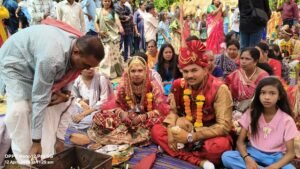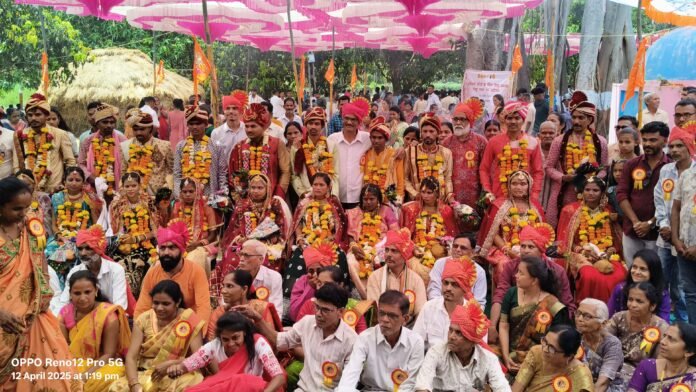In the heart of Hindu tradition, marriage is more than a union between two individuals—it’s a sacred bond woven with community, dharma (duty), and blessings. Samuhik Vivah, or collective marriage, reflects this spirit beautifully, bringing together multiple couples in one grand ceremony that emphasizes unity, simplicity, and shared joy.

Rooted in the Vedic ideals of sangha (community) and seva (service), these ceremonies transcend economic status. They enable families to perform the vivah sanskar—one of the sixteen Hindu samskaras—with dignity, even without lavish displays. The rituals, from kanyadaan to saptapadi, are performed in full accordance with Hindu customs, preserving spiritual depth while fostering a collective spirit.

Temples, ashrams, and social organizations often organize these events with support from charitable groups. Each couple receives the essentials for their wedding, ensuring that every ritual is honored. More importantly, these ceremonies foster samajik samrasta—social harmony—by welcoming participants from varied backgrounds, thus dissolving caste and class distinctions.

Samuhik Vivah also echoes ancient communal living ideals, where celebrations were shared, and society stood together in life’s milestones. In a modern world where weddings can become financial burdens, this tradition reminds us that the essence of a Hindu marriage lies in its sacred vows, not in extravagance.
Ultimately, Samuhik Vivah is more than a cost-effective solution—it is a cultural reaffirmation that marriage is a sacred duty, best celebrated with humility, devotion, and community support.


